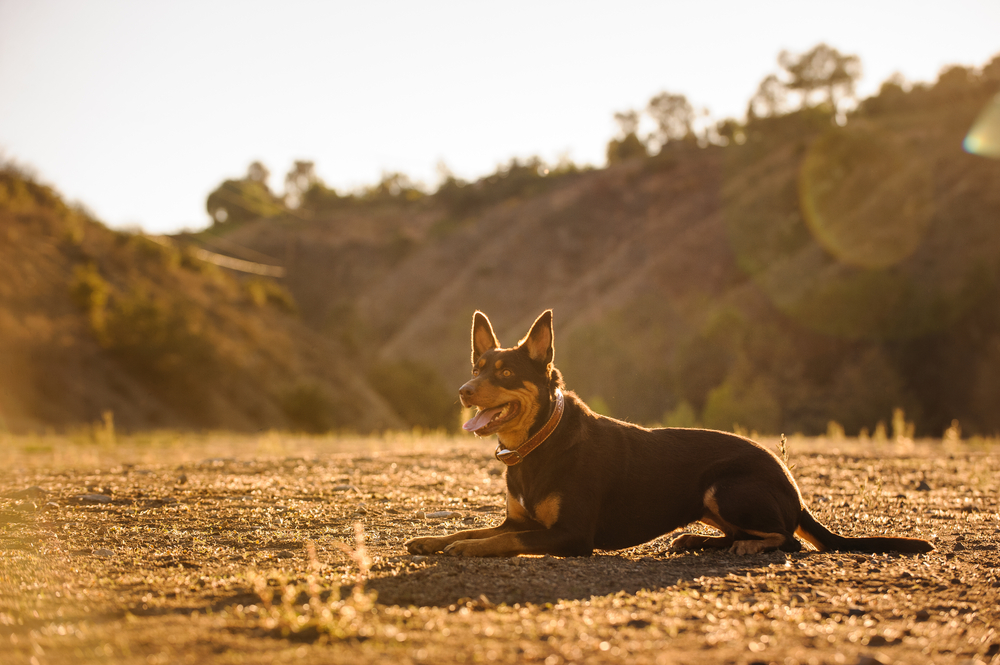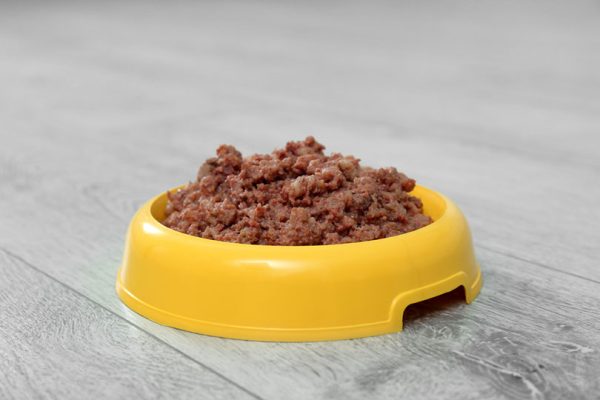In this article
View 8 More +The Australian Kelpie is a medium-sized dog that has become more popular in recent years due to their unconditional loyalty and high intelligence. If you have been thinking about getting this breed but are still on the fence about it, keep reading as we dig in and discuss their characteristics, appearance, grooming needs, and health conditions, so you can see if they are right for you.
Breed Overview
Height:
17–20 inches
Weight:
35–50 pounds
Lifespan:
10–13 years
Colors:
Black, black and tan, red and tan, fawn, red, chocolate, blue
Suitable for:
Individuals and families, experienced dog owners, working environments
Temperament:
Intelligent, loyal, protective
The Australian Kelpie has exceptional herding skills and high intelligence, making them great working dogs. They have plenty of energy and a strong work ethic. They are also loyal to their owners, forming strong bonds with their family members. They also have a strong desire to please, which makes them great companions even if you don’t have a job for them to do.
Australian Kelpie Characteristics

Australian Kelpie Puppies

Australian Kelpie puppies are extremely active and playful, like the adult dogs, but their curiosity can get them into trouble without plenty of supervision. It’s the perfect time to socialize them with as many people, places, and things as possible so they feel more comfortable around them as adults. Holding scheduled training sessions and spending plenty of time with them to help develop strong bonds is also crucial.
When looking for an Australian Kelpie puppy to purchase, there are plenty of online sources available. Just be sure to choose a reputable breeder who follows the breed standards and provides the proper paperwork and history for the dog that you are buying.

Temperament & Intelligence of the Australian Kelpie

The Australian Kelpie is an alert and energetic dog that is protective of their owners, which can make them wary of strangers without plenty of socialization as puppies. However, they are not usually aggressive and are instead playful and affectionate. They follow orders well and can work long days without becoming tired.
The Australian Kelpie dog has exceptional intelligence, which might be due to their possible connection to the Border Collie, another highly intelligent dog breed. They can learn new tasks quickly and are great problem solvers and independent thinkers.
Are These Dogs Good for Families? 👪
The Australian Kelpie can be a great choice for active families that enjoy spending time outdoors. They also need plenty of space to run and play, so they are not well-suited to small homes, and their strong herding instincts can make them unpopular with children. However, they are playful and friendly, which makes them fun companions, and their protective nature will help you keep your home safe.
Does This Breed Get Along With Other Pets?
The Australian Kelpie dog usually gets along with other family dogs quite well, especially if they receive plenty of socialization with them as a puppy. However, their strong herding instincts and prey drive might cause them to chase after smaller animals, like cats.

Things to Know When Owning an Australian Kelpie

Food & Diet Requirements 🦴
Due to their high energy levels, your Australian Kelpie will need a high-quality dog food that lists real meat like chicken, turkey, or beef as the first ingredient and doesn’t have any chemical preservatives or artificial colors. Talk over your pet’s diet with your vet, especially if they have a health problem, to ensure that you are providing the highest quality nutrition.
Exercise 🐕
An Australian Kelpie is an active dog that will need at least 1–2 hours of exercise each day with a mix of activities that include running, playing fetch, and agility training. Short, frequent bouts of play are better than longer ones, especially for puppies, and remaining consistent is essential to help them get into a routine that they can look forward to.
Training 🎾
The Australian Kelpie dog is an intelligent breed that is capable of learning many tricks. However, their high energy level can make it hard for them to stay focused during your sessions. Getting started while they are still a puppy can set them up for a schedule that lasts into adulthood. Use plenty of positive reinforcement like treats and praise to help keep them interested, and holding your sessions after playtime will allow your pet to burn off excess energy before you get started.

Grooming ✂️
Your Australian Kelpie requires regular brushing to keep their fur looking great, especially during the spring and fall when they tend to shed more. You will also need to trim their nails if you hear them clicking on the floor and check their ears frequently for signs of buildup and infection.
- See Also: Best Dog Shampoos – Reviews & Top Picks
Health and Conditions 🏥
- Luxating patella
- Osteochondritis dissecans
- Hip dysplasia
- Collie eye anomaly
- Cerebellar abiotrophy
Minor Conditions
- A luxating patella is a condition that causes the kneecap to slip out of place as your dog walks and can lead to weakness in the hind legs, an inability to jump, and a reluctance to run or exercise. Treatment includes weight management, medication, and surgery.
- Osteochondritis dissecans is a condition that causes the abnormal development of cartilage, which can lead to pain, difficulty walking, and swollen joints. Treatment includes plenty of rest, physical therapy, medication, and surgery.
Serious Conditions
- Hip dysplasia – A common problem with many dog breeds, especially active dogs like the Australian Kelpie. It’s a condition that causes the ball and socket of the hip joint to not fit together properly, which means it wears down prematurely, leading to decreased activity, pain, limping, and lameness in the hind legs. Unfortunately, there is no cure, but weight management, physical therapy, medication, and surgery can help manage it.
- Collie eye anomaly, or Collie eye defect, is a condition that can affect vision and cause blindness. The best way to avoid this disease is to choose a good breeder who watches for this disease in the dog’s ancestry to ensure that the genes don’t transfer to potential puppies.
- Cerebellar abiotrophy is a brain disease that causes cells within the cerebellum to die off, leading to a loss of coordination, muscle tremors, and an abnormal gait that causes the dog to pick up their front legs very high. Unfortunately, there is no cure, but certain medications can help manage the signs

Male vs. Female
The male Australian Kelpie is usually slightly taller and heavier than the female and is usually more outgoing, playful, and energetic. The female is usually more reserved and independent, often displaying a protective and nurturing nature. Both make great companions and working dogs.

3 Little-Known Facts About the Australian Kelpie
1. The Breed Has a Mysterious Beginning
While most experts believe that these dogs got their start in Australia, their exact lineage isn’t completely clear, with certain legends claiming that their amazing abilities come from a mythical creature called the “Kelpie,” which is a shape-shifting water spirit.
2. These Dogs Have Strong Herding Instincts
The strong herding instincts of these dogs often kick in while they are still puppies, and they will begin to herd people and other animals without any training.
3. They Have Skills Beyond the Farm
Aside from their strong herding skills, the Australian Kelpie’s high intelligence enables them to learn and perform many other important tasks, including search and rescue. They also make great service and therapy dogs.


Conclusion
The Australian Kelpie dog is a wonderful breed with a high energy level well suited to families that like to spend a great deal of time outdoors. These dogs need plenty of room to run, so they are not well suited to smaller homes, but they are easy to train and form strong bonds with their owners. Their playful nature makes them fun to have around, and their endless energy means they are always ready to do whatever you want, whether it be a hard day’s work or a relaxing walk through the woods.
Featured Image Credit: Lisjatina, Shutterstock


















